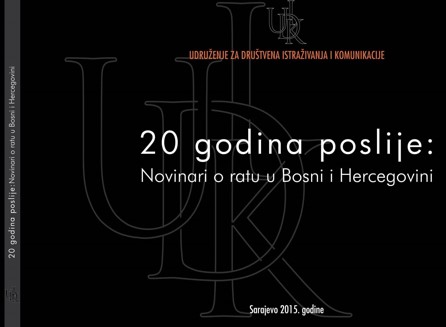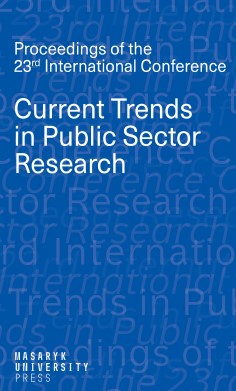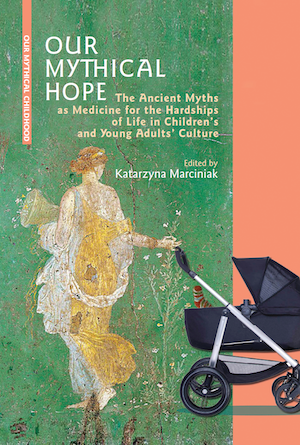
We kindly inform you that, as long as the subject affiliation of our 300.000+ articles is in progress, you might get unsufficient or no results on your third level or second level search. In this case, please broaden your search criteria.






Ova knjiga sadrži intervjue sa osobama koje na različite načine svedoče rat/o ratu u Bosni i Hercegovini. Svedočanstva u slici i svedočanstva u reči svedoče iskustva dok je trajao rat i kada je rat prestao. Jedni svedoče rečima, drugi slikama. Novinari i fotografi, svako na svoj način, izgrađuju sećanje kao politiku pamćenja, stvarajući arhiv svedočenja. Neki među njima su preživele opsadu Sarajeva – tu najdužu opsadu jednog grada u istoriji ljudske civilizacije.
More...
The limited possibilities to compare the inputs with the outputs build a barrier for the efficiency assessment in some segments of the public sector. The sphere of external safety undoubtedly ranks among those segments of the public sector. The alternative way of assessment can be formed by the analysis of alternative aggregates. The efficiency of the economic management of public funds is, among others, determined by the personnel structure optimization which can be one of the alternative indicators. Optimizing of personnel structure was one of the transformation goals of Czech Armed Forces. By use of personnel optimization indicator which is based on the ratio between soldiers and civil employees was possible to track the dynamic of transformation as well as the transformation goal fulfilment. The rate of personal optimization ratio drop in time of transformation, which had been caused by the change of the system and was replaced by the increase in the utilization of the apparatus in the following years. Since 2009, the proportion of the supportive bureaucratic apparatus has been exceeding the values from the late 1990s and it still shows increasing tendencies. Due to this result we can evaluate the fulfilment of one several pre-transformation goals.
More...
This paper deals with Baumol´s cost disease theory. This theory is usually used to explain the different dynamics of some sectors of the economy, particularly public sector and to explain the growing share of the public sector in total resources. The aim of the paper is to verify the validity of Baumol´s theory on data from the Czech economy using the time series from 1995 – 2017. It was found that the Czech economy shows some symptoms of Baumol´s cost disease. These include, in particular, the growing share of the tertiary sector in total gross value added and employment, declining trend in labor productivity in the tertiary sector, declining expenditure on goods and rising spending on services spent by households. It was also confirmed that wage growth in the tertiary sector is determined by wage growth in the secondary sector, which is in line with Baumol´s theory. Although the share of the public sector in total resources in the Czech Republic is increasing, the share of public expenditure in GDP has a decreasing trend. This may be due, inter alia, to the faster growth rate of GDP recently.
More...
The article presents the conditions of admissibility of State aid in the European Union, taking into account the rules applicable to the sectoral aid for enterprises. Pursuant to Article 107 par. 3 (c) of the Treaty on the Functioning of the European Union (TFEU), State aid may be compatible with the internal market in so far as it is intended to facilitate the development of certain economic activities. Thus, aid that is determined according to sectoral criteria may be permissible where this leads to the development of that sector. While many aid schemes are sectoral in nature, the European Commission has not sought to develop a sectoral approach in the development of its State aid policy. In general, the main state aid policy instruments governing horizontal aid, such as the guidelines on regional State aid or the guidelines on environmental protection, draw no distinction between different sectors, other than to restrict their application in certain circumstances. Nevertheless, certain sectors have been subjected to different treatment under the State aid rules. In particular, sectors that suffered from over-capacity, such as motor vehicles, synthetic fibres and textiles were subject to individual treatment by the Commission. The article offers an analysis of State aid granted by EU Member States is carried out under the provisions of the Treaty on the functioning of the European Union and the rules of State aid admissibility on the basis of the implementing sectoral regulations. The analysis made it possible to verify the influence of State aid on economic growth in EU Member States, which provided State aid for sectoral development in the years 2000-2017. The analysis was based on a linear regression model. The response variable (dependent variable Y) is the size of the GDP, while the explanatory variable (independent variable X) is the expenditure on State aid for sectoral development.
More...
C.S. Lewis’ acclaimed 1956 work "Till We Have Faces: A Myth Retold" was his final novel. While not his favourite of his own works – that honour went to "Perelandra" – it was the one he considered his most mature and accomplished. "Till We Have Faces" presents a powerful retelling of the myth of Cupid and Psyche. One of its principal themes is that of innocent delight in the divine and the disastrous consequence of renouncing that childlike state in the name of a false, and ultimately cynical, maturity. Significantly, the work was published in the same year as Lewis’ "The Last Battle" and it clearly resonates with major themes in that book as well as in the "Chronicles of Narnia" more broadly. In particular, the story of Susan’s tragic journey from childlike wonder to adult cynicism inverts disturbingly the conversion narrative of Orual, Psyche’s jealous sister, without closing the door on the possibility of redemption. More positively, the simple delight that Psyche shows in Cupid finds many echoes in the "Chronicles", above all in the joyful, romping reunion with Aslan in "The Lion, the Witch and the Wardrobe" and the heaven sequence of the "Last Battle". For Lewis, Christianity was to be understood as the “True Myth” echoed and anticipated in all the other myths of the world. Drawing principally on "Till We Have Faces" and the "Chronicles of Narnia", this paper explores the way in which Lewis uses the vehicle of myth on multiple levels to engage adults and children in the fundamental questions of life.
More...
Becoming a hero is the master plot of a popular modern (especially Hollywood) narrative, manifesting in such diverse contemporary forms as coming-of-age tales, superhero origin stories, monomyth quests of refusing the call and returning with the elixir, and “emotional journeys” of self-discovery and stepping up. Yet despite the widespread claims of mythological prototypes for this master plot, classical myth itself is only sporadically interested in its heroes’ childhood and adolescence – and the handful of exceptions, from the "Telemachy" to the "Achilleid", offer an instructive gallery of the narrative and ideological differences between ancient and modern notions of the narrativity of childhood and the agency of youth. Modern fiction for pre-adult readers and viewers has colonised this vacant space in a variety of ways, populating the adolescence of heroes with adventures which overlay classical myths and models with distinctively modern ideas of young-adult narrativity and the nature of heroic growth. Three notable extended cases include the "Young Heroes" series by Jane Yolen and Robert J. Harris (2002–2004), the live-action "Young Hercules" television series (1999), and Disney’s "Hercules: The Animated Series" (1999), all of which offer sustained measurements of the distance between ancient and modern popular conceptions of adolescence, and of how modern mythical constructions of a classical hero’s journey differ from their ancient prototypes.
More...
Maciej Słomczyński, writer, poet and playwright, a prominent translator of English literature and the author of the acclaimed crime fiction stories, published under the pseudonym Joe Alex, is also the author of the historical-adventure novel for youth "Czarne okręty" [Black Ships]. Originally published in parts as a series, the novel follows the adventures of a Trojan boy, entangled in the intrigues of Egyptian priests and conspiracies of the rulers of Minoan Crete, and finally going for a quest to the Far North in search of the mythical land of amber. The quest, resembling – due to its exoticism – the Expedition of the Argonauts, despite ostensible success ends in fact in a disaster, and the novel itself can be used as an example of a specific type of Bildungsroman dressed in ancient robes.
More...
International fantasy literature for teenage readers based on motifs of the ancient Greek and Roman mythology often focuses on an adolescent protagonist, who has a lot of problems with growing up. Therefore a mythic narrative emerges in the plot to help the main character cope with his or her problems. This narrative, filled with supernatural incidents, is a vehicle for the protagonist to become a strong and self-confident adult, who saves the world from evil mythical creatures. This paper investigates the famous "Percy Jackson" series by Rick Riordan, the popular "Blue Secrets" series by Anna Banks and the blockbuster movie "Pirates of the Caribbean: Salazar’s Revenge" by Joachim Rønning and Espen Sandberg to demonstrate how normal human protagonists are described as holy Redeemer-figures by being amalgamated with the mythic god Poseidon. In this way mythic motifs are mixed with Christian values to create a modern kind of superhero, giving people a new sense in life. This superhero spreads hope for the threatened mankind, which is very important in (today’s) dark times.
More...
Since Greek and Roman Antiquity, Hercules has retained his power as the embodiment of heroism, constituted by qualities like superhuman strength and excessive emotionality, immense suffering and triumphant apotheosis. This ambivalence has become characteristic of the heroic temper established within Greek literature, above all in the epic cycle and in Attic tragedy. Apart from the manifold personality of the hero, a decisive element of hope lies in his stunning achievements as the cultural hero eliminating primordial monsters and dangers threatening civilization. This chapter first follows the traces of Hercules’ “mythopoesis” which made him a cultural icon in Greek and Roman Antiquity. It can be demonstrated that already then this was a multimedia process, since literary evidence, e.g.. from Sophocles’ or Euripides’ tragedies, is to be situated in a dialogue with visual art and other forms of self-representation of the polis. The postmodern reception of this multimedia Heracles myth(s) in Ovid’s "Metamorphoses" builds the bridge to examples of hopeful images of the ambivalent cultural hero in contemporary media for children and young adults. From this heuristic perspective we can follow the traces from the fallen hero of civilization in Attic tragedy to the messianic Hercules in contemporary blockbusters. Heracles/Hercules emerging particularly as the Hero of Hope in ancient tragedy and poetry had a recent and very impressive revival in children’s literature, namely in "Athena the Wise" by Joan Holub and Suzanne Williams within the "The Goddess Girls" series.
More...
Where hope is brought up in relation to autism, it is often linked to its absence or loss, with the life of an autistic child regarded as one of suffering and hardship. This chapter introduces a programme of lessons for autistic children that move beyond such a deficit model to one grounded in a perception of autism as a way of being. I set out how the lessons are based on the character of Hercules, and in particular the choice he is tasked to make between two very different paths in life. I discuss how the lessons utilize Hercules as a “gateway” for autistic children to identify and contextualize themselves and others, and a “gateway” for neurotypical people into autistic ways of being and experiencing. Hercules, I conclude, is a “hope bearer” – for autistic children, and for all.
More...
The chapter discusses Hercules’ myth against the backdrop of selected psychological and pedagogical theories. The hero is compared with other characters, and the pros and cons of their use as models in psycho-educational situations are discussed. The author reflects on possible applications of Hercules’ Twelve Labours cycle in clinical and educational contexts, and particularly in cases such as disruptive behaviours and conduct problems.
More...
This chapter explores the behaviors and attitudes displayed by female characters in juvenile novelizations of Greek myths that promote psychological resilience. Four novels are analyzed using the American Psychological Association’s guidelines for the promotion of resiliency in children and youth. Two novels focus on the Trojan cycle, "Inside the Walls of Troy: A Novel of the Women Who Lived the Trojan War" by Clemence McLaren and "Goddess of Yesterday" by Caroline Cooney, while the other two, "Lost in the Labyrinth: A Novel" by Patrice Kindl and "Dark of the Moon" by Tracy Barrett, adapt the Minotaur myth. In each case, the female main characters experience traumatic events, but use recognized psychological coping mechanisms to endure with fortitude.
More...
Myth may be a source of hope for children and young adults, but children may themselves be envisioned as myth’s best hope: fresh readers whose engagement with stories grants those stories continuing life. This hope is at the heart of the “Save the Story” series, in which noted authors rewrite literary works for children. Two books in the series retell ancient myths: Yiyun Li’s "The Story of Gilgamesh" and Ali Smith’s "The Story of Antigone". Both writers produce stories they hope will help their readers grow into admirable adults. Li recasts Gilgamesh as a child, his journey glossed as progress towards adult understanding; Smith uses animal intermediaries and flashes of irreverence to temper a story she presents as terrible yet nourishing. Their hope is that readers will so value stories that have made them who they are that they will in turn perpetuate those stories, keeping them safe from oblivion.
More...
Three years on from her debut novel "The Amber Fury" (2014), Natalie Haynes once again adapts Greek tragedy in ways designed to illuminate the psychological challenges facing teenagers and young adults. Where "The Amber Fury" is set in the contemporary world, "The Children of Jocasta" (2017) takes the readers to Bronze-Age Thebes. It retells the stories in Sophocles’ "Oedipus" and "Antigone" but from the perspectives of two women, Jocasta and Ismene, whose subjective experiences of trauma as very young women on the threshold of adulthood are too often overlooked. Colm Tóibín’s novel, "House of Names", is based on the myth of the house of Atreus and it uses the version told in Aeschylus’ trilogy "Oresteia". It is a masterpiece beneficial especially for those who have seen civil war or family trauma which are part of their experience of puberty and its aftermath. Both novels focus on the hardships and deprivations faced by the protagonists, with a ray of hope making the novels both therapeutic and emotionally sustaining.
More...
Soviet cinema for children experienced a shock in the 1980s when controversial films presenting a terrifying image of childhood were made in the USSR. These films put difficult questions of growing up and often refer to Classical Antiquity and mythology. I shall discuss two important films of this period: "Чучело" [Chuchelo; Scarecrow] by Rolan Bykov, 1983, based on a novel by Vladimir Zheleznikov; and "Дорогая Елена Сергеевна" [Dorogaia Elena Sergeievna; Dear Miss Elena] by Eldar Riazanov, 1988, based on a play by Liudmila Razumovskaia. Although the movies are far from being typical peplum films, they contain important echoes to Greek mythology and culture, referring to Antigone, Heracles, Christ, and Dionysus. Analyzing the movies in the sociocultural context and in comparison with the texts they were based on, I would like to determine how ancient elements of the movies and references to tragedy and mythology provide children with hope for the challenges of growing up.
More...